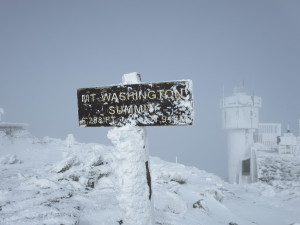Rick Curtis, author of “The Backpacker’s Manual” (2005), an excellent and highly recommended 400+ page treatise on backcountry skills, makes the point (pp. 226-228), also made by many others in the outdoor recreation field, that potential hazards in the outdoors fall within three categories – GEAR, PEOPLE, ENVIRONMENT.
These various hazards are further described in the book as follows:
GEAR (relevant to personal and crew gear, is it present, can it function, and do the participants know how to use?):
- clothing (improper, insufficient?)
- equipment (inoperative, improper, insufficient, missing?)
PEOPLE (relevant to who is participating, and how they act and interact):
- personal experience (lacking?)
- physical condition (insufficient?)
- medical conditions (pre-existing?)
- mental state (trying to prove oneself, lack of awareness of hazards, fatigue, anxiety, fear, limited outdoor skills, lack of interest in participating, poor communication skills, not wishing to follow instructions, lack of willingness to cooperate, poor teaching skills by leaders, lack of ability to manage the group, inability to exercise good judgment, inability to react to emergencies?)
ENVIRONMENT (relevant to the activity, season and climate, and the location):
- rocky trails
- poisonous plants
- lightning
- stinging insects
- sun overexposure
- temperature extremes
- unsafe drinking water
- unprotected ledges
- water hazards (moving water, water temperature)
- storms, flooding
A good summary of potential hazards to consider, both pre-activity and during the activity.
A lengthy discussion of risks associated with “Gear, People, and Environment” as pertaining to outdoor Scouting activities also resides in this blog author’s own book “Risk Management in Scouting – Essentials for Leaders” (2015).
It is important to recognize that each of gear, people, and environment, as noted above, each include multiple subcategories of possible risk issues.
It is accordingly possible, depending on circumstances, that one of gear, people, or environment may overwhelm the other two if multiple subcategories of risk raise their ugly heads with respect to a single one of gear, people, or environment.
For instance, if a hiking group confronts a sudden rain storm having high winds and dramatically dropping temperatures, that circumstance more overwhelm the ability of gear and people to compensate, requiring the event to be stopped, or assistance to be summoned.
 An excellent example of how the three risk factors of gear, people, and environment can interact resides in the Mount Washington hiking story in the January, 2016 issue of Boys’ Life, where a Scout group attempted to hike to the summit of Mount Washington (NH) during extremely challenging weather conditions in February, 2015. Despite being properly geared up, and despite having Scouts of appropriate age and experience as participants, the environment won the day, causing the group to turn back without reaching the summit.
An excellent example of how the three risk factors of gear, people, and environment can interact resides in the Mount Washington hiking story in the January, 2016 issue of Boys’ Life, where a Scout group attempted to hike to the summit of Mount Washington (NH) during extremely challenging weather conditions in February, 2015. Despite being properly geared up, and despite having Scouts of appropriate age and experience as participants, the environment won the day, causing the group to turn back without reaching the summit.
The lesson is that if one of the factors of gear, people, and environment becomes such an issue that the other two cannot adequately compensate, the activity will need to be modified or stopped, and “Plan B” instituted, as was done in the Boys’ Life story.
This is also demonstrated in the following story where a hiker was rescued in the New Hampshire wilderness due to the conditions encountered despite believing his gear was adequate (reportedly, the rescued hiker did NOT have a New Hampshire HIKE SAFE card to protect him from the possibility of being charged for rescue expenses):
http://manchesterinklink.com/disoriented-hiker-uses-sos-button-rescued-pemi-wilderness/
Remember, GEAR, PEOPLE, ENVIRONMENT!
